The ECS Z270H4-I Durathon 2 Mini ITX Motherboard Review
by E. Fylladitakis on September 5, 2017 10:30 AM ESTBIOS
The ECS Z270H4-I Durathon 2 features a graphical BIOS which expectedly defaults in the “easy” mode. The “easy” mode allows the user to tweak only the boot device priority and select one of the pre-programmed performance profiles, with the rest of the display being of purely informative nature, graphically displaying the CPU and system temperature, CPU and system fan speeds, and CPU/DIMM/12V voltages.
In order to access more options and features, the user needs to go into the “Advanced” mode (F7). The advanced mode has eight menus but there are dozens of submenus hidden into some of them.
In the advanced mode, the screen is essentially split into three parts. The top bar displays the main menu selection, the left side of the screen lists the options and the right side of the screen displays a navigation legend and information on the highlighted option.
The first and default main menu option is the “Main” screen, which only has three tweakable options: the system’s language, the date and the time. A fourth line indicates the BIOS version. The “Advanced” menu lists nine submenus, with most of them being options related to the onboard controllers. One option that stands out is the “PC health status”, which is an informative screen that displays basic voltage and temperature information but also hides the “Smart Fan” controls and settings that would allow the user to manually control the speeds of the attached fans. This option would be much easier to find in the “M.I.B. X” menu, alongside with all frequency/timing/voltage controls.
The third main menu option brings up the “Chipset” screen, which only has three submenus with a few chipset-related options each. Strangely, we found the power state after power loss option in the “PCH configuration” submenu, an option that clearly should have been inside the “Power Management” submenu that we found in the previous screen.
The fourth and most important main menu option is the “M.I.B. X”, which stands for “Motherboard Intelligent BIOS X”. This screen has five submenus that hide all of the motherboard’s frequency, timing, and voltage controls. We found the CPU frequency/ratio/power configuration options into the first submenu and made an interesting discovery: by default, the CPU power limits were overridden and its turbo ratios were set at 45× for the first core and 44× for the other three cores. Most manufacturers nowadays ship their motherboards with multi-core turbo enabled, but this is the first time that we have seen a manufacturer overriding the default power limits.
The “memory configuration” submenu also has a very long list of options, most of which are beyond the understanding of even experienced overclockers. Another very interesting submenu is the “over voltage configuration”, which holds few voltage control options that technically cover only the CPU and DIMM voltages. The range of these voltage settings is ridiculous, with the ECS Z270H4-I Durathon 2 being capable, in theory, to push the CPU voltage up to 2.5 volts. The step of these settings, however, is relatively large for their respective useful ranges. For example, the CPU voltage setting has a step of 50 mV, which is not great for advanced users that like to fine-tune their systems. Note that the BIOS adjusts the voltage settings live, meaning that the voltages change instantly when the user tweaks the options, making it exceptionally dangerous to fiddle with these settings without at least basic experience and/or lacking focus!

Settings are changed LIVE, so we didn't stay at 2.5V for long
The “Security” main menu lists options that we usually find into other menus/submenus. Here we found the administrator password settings, usually found under the “Main” or “System” menus, and the Secure Boot options that would most likely fit best into the next main menu option of this BIOS, the “Boot” menu, which lists all of the boot-related settings. We found out-of-place options even in the “Exit” screen, with the first being the trigger to switch the BIOS back to the easy mode, which should certainly be inside the “Main” menu and as the first option as well, allowing users that accidentally entered the advanced BIOS configuration to go back to the easy mode. The other option that we feel it should be moved is the “Boot Override” option, which would probably fit best into the “Boot” main menu, yet it restarts the system so we can understand why the BIOS’ programmer placed it here.
Software
It seems that Google is aggressively promoting their products via all motherboard manufacturers nowadays, as we find the included driver’s DVDs pushing the users to install Chrome as their default browser. ECS’s disk is no different, with Google’s software pushing for an installation alongside the basic system drivers. There is no option to manually select only certain driver packages here, only a “setup” button that will bring up an installer for all of the system’s drivers. The user can select which drivers to install from inside the automated installer.
There are only three utilities included inside the DVD, the “eBLU”, “eDLU”, and “eSF”. The “eDLU” stands for “Driver Live Update” and is a simple utility that will check the versions of your drivers against those at the manufacturer’s website and, if there are newer versions available, install them. Similarly, the “eBLU” stands for “BIOS Live Update” and is a simple utility that checks for newer BIOS versions.
The third utility, the “eSF”, stands for “smart fan” and is a very simple utility that allows the user to control thermal control profiles for the two attached fans. There are four pre-programmed profiles, plus a custom setting that allows the user to manually control the fan spin up and down points. Note however that the axes do not have any tick labels, forcing the user to roughly guess the temperature points.


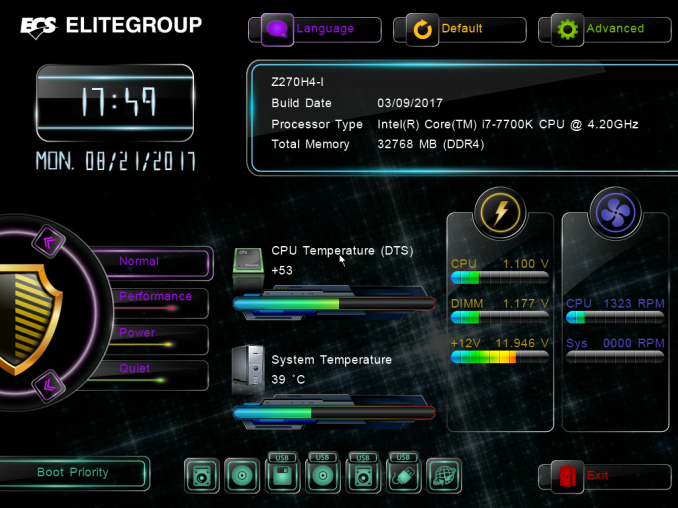







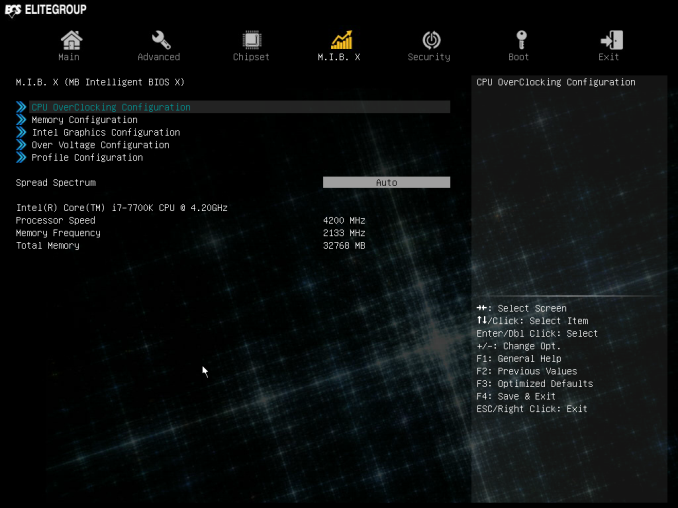
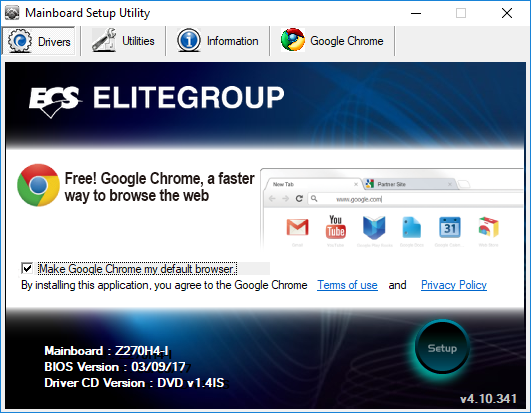
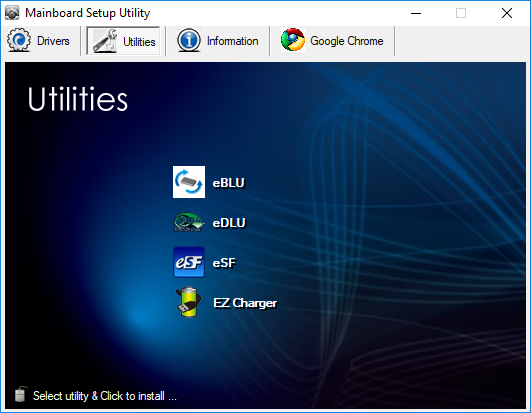
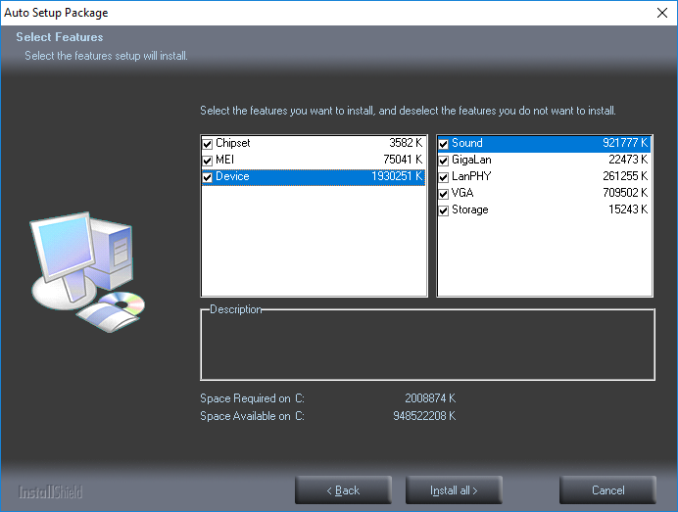
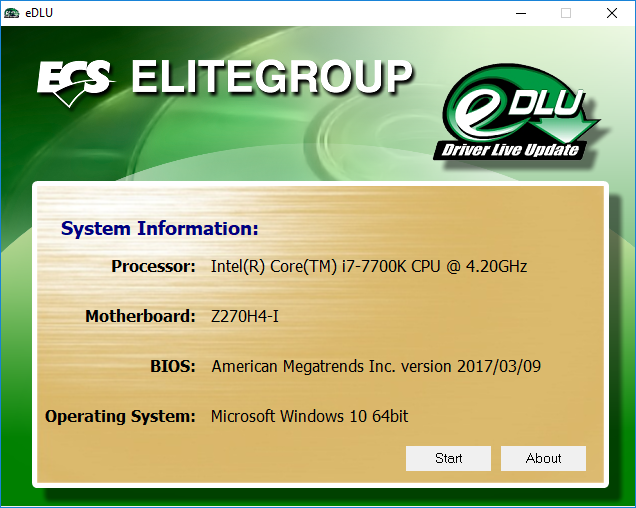

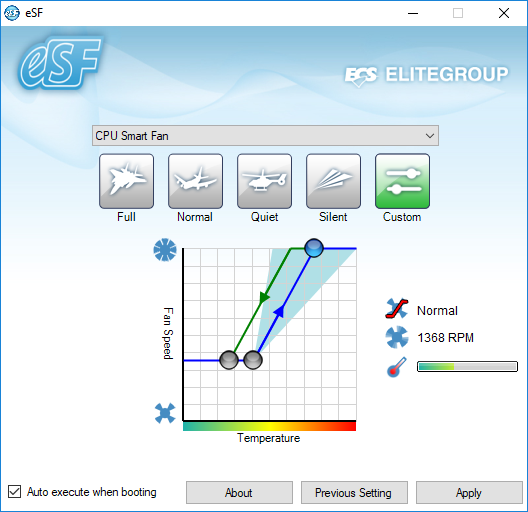








19 Comments
View All Comments
jabbadap - Tuesday, September 5, 2017 - link
Erhm Your spec table says "Onboard M.2 none", yet there is one m.2 slot behind the motherboard if I'm not mistaken.Interesting little guy, though I would not OC with that tiny vrm heatsinks it has.
Ryan Smith - Tuesday, September 5, 2017 - link
Thanks!(There are actually 2, one on top and one on the underside of the board)
jtd871 - Tuesday, September 5, 2017 - link
Thanks for the review.The lustre on the 200-series is wearing a bit thin, however, with Intel wooing consumers with the next-gen CPUs and chipset, so I'm not surprised to see some manufacturers trying to drum up a bit of business to move some inventory.
I've always been a bit confused as to why motherboard manufacturers appear to cheap out on their mITX offerings (since mATX and mITX would seem to be better suited to the capabilities of the Z-series chipsets with the inherent limitations on PCI lanes than full ATX or E-ATX boards).
Notes to mobo manufacturers and designers, here are some ideas on how to differentiate your product to consumers (other than price):
1) Don't cheap out on the audio codec. Use the latest and greatest.
2) If you're offering a Z-series chipset, include the power phases and connectors requires to overclock the top-of the line CPU SKU for the chipset, and choose heatsinks based on performance rather than looks.
3) Consider dropping the number of SATA connections to 2: mITX systems generally don't run more than 2 SATA drives, and many these days just run a NVMe drive. Of the SATA connections you do offer, make them RAID-able. Use the freed-up HSIO lanes for more the latest I/O connectors.
4) Especially for mITX, use the physically smallest I/O connectors practical and locate them, or at least 1 of each type, where a full-length PCIe card won't obstruct them.
5) Include diagnostic LEDs (or even a separate diagnostic PCB that connects to a header on your board?) (to save space).
6) Shamelessly copy (and, by all means, improve on) the best and most innovative features of your competitors' boards and BIOS.
7) Read your product's reviews. Especially the critical ones.
Brianmmm - Monday, September 18, 2017 - link
Maybe you're thinking of something like this? I have one, it rocks.http://www.anandtech.com/show/9854/asus-maximus-vi...
nathanddrews - Tuesday, September 5, 2017 - link
I got really excited when I saw "Durathon" because I thought it was some new AMD chip I didn't know about.MajGenRelativity - Tuesday, September 5, 2017 - link
Return of the Duron?artk2219 - Tuesday, September 5, 2017 - link
You joke but i'd love to see that. Maybe name the new Raven Ridge APU's with failed GPU's Durons instead of athlons? Probably not, since sempron took Durons place, but i wouldnt mind it :).BrokenCrayons - Tuesday, September 5, 2017 - link
Eh, I know it's interesting and sometimes fun to overclock, but the performance benefit is typically insignificant without water cooling or a very large air cooler. Both of those cooling setups demand physical space so they increase the size of the system and that takes away some of the point in getting a Mini-ITX motherboard in the first place. ECS might be touting it as a feature, but I can't see it being a key selling point to even the small form factor gamer audience targeted by this motherboard. It probably doesn't matter much that its a rather limited capability of the board.DanNeely - Tuesday, September 5, 2017 - link
As I've observed before, the MITX mobo form factor is trying to serve two masters with different needs, desires, and general system configurations.The first - and who the form factor was originally created for - are people who want as small of a system as possible (but who don't find the NUC/etc compelling for whatever reason). For these people, you're right that any OC feature is likely to be unused. However they're not who it's being intended for.
The second group of people building mITX are conventional gamers who've decided that other than a single GPU they have zero need of PCIe expansion slots, and thus no need for a larger mATX/ATX motherboard. They're still building conventional gamer type systems with a large enough PSU and sufficient cooling to consider an OC because they're using cases only a few inches smaller than what would be normal with an mATX build.
btmedic04 - Wednesday, September 6, 2017 - link
Im surprised ECS is still around. I haven't used one of their products since the G45/intel pentium dual core system I put together for my dad way back when.As for the overclocking options, I could see them possibly being useful in an undervolting/underclocking scenario (say a passive build) or paired with a pentium g3258-like processor (please intel! the i3 7350k is overpriced for what it is)